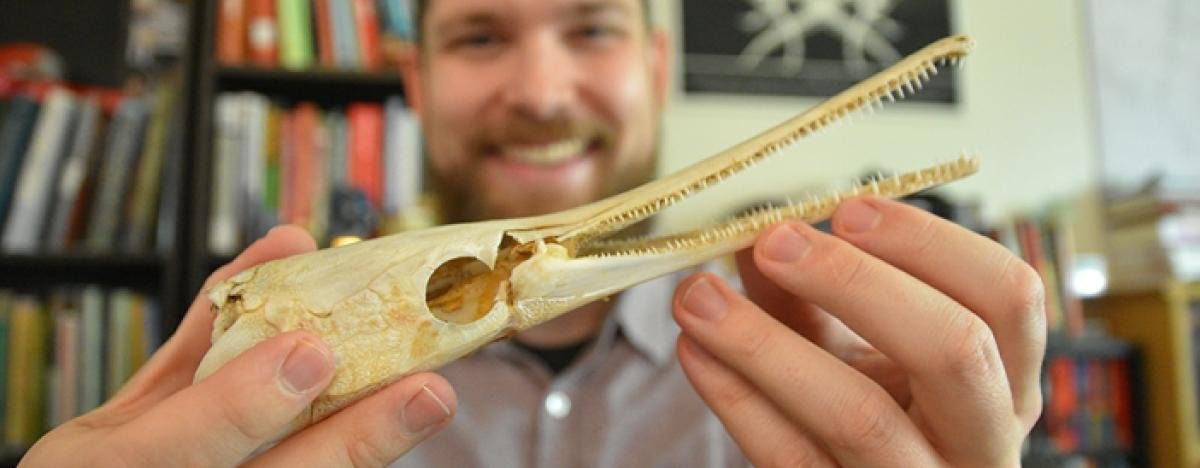There is a common misconception that Ancestral Pueblo people rarely ate fish. The remains of fish eaten by these people are extremely rare at early archaeological sites in central New Mexico’s Middle Rio Grande basin. However, new research from the University of New Mexico shows that not only did fish become a common part of the diet of Ancestral Pueblo people, but the larger the fish, the better.
 Researcher Jonathan Dombrosky studied ancient fish bones to understand the diets of Ancestral Pueblo people. Credit: University of New Mexico
Researcher Jonathan Dombrosky studied ancient fish bones to understand the diets of Ancestral Pueblo people. Credit: University of New Mexico
The U.S. National Science Foundation-supported research, published in the Journal of Archaeological Science, used 3D scans of modern fish to estimate the body size of ancient fish.
“We can use 3D scanning technology to estimate the body size of past animals from their fragmented bones,” said anthropologist Jonathan Dombrosky, the lead author of the study. After establishing a reference dataset of 3D measurements of fish bones from modern specimens, the researchers could accurately estimate the size of past fish based on individual bones and bone fragments.
“We can use this new method to reconstruct the body size of fishes recovered from Ancestral Pueblo sites in the Albuquerque area, allowing us to better understand why people made the decisions they did to eat the foods they did,” said Dombrosky.
The 3D scanning technique can also be used on bones and fragments that are not amenable to more traditional methods of estimating the body size of animals based on measurements such as the length or width of specific, relatively intact bones.
The new method allowed the scientists to evaluate whether Ancestral Pueblo people caught larger than average fishes during the late pre-Hispanic period (1300–1600) in New Mexico’s Middle Rio Grande region. The researchers then evaluated the connection between a changing environment and Pueblo fishing decisions.
Dombrosky’s previous research showed that fish consumption increased over time in Ancestral Pueblo communities as a change in climate led to the presence of more freshwater habitat in the area. “What we’ve shown is that Ancestral Pueblo people likely ate fish, and they ate large healthy fish,” said Dombrosky. “Fishes were targeted when fish communities were healthy and stable.”.
Provided by National Science Foundation





